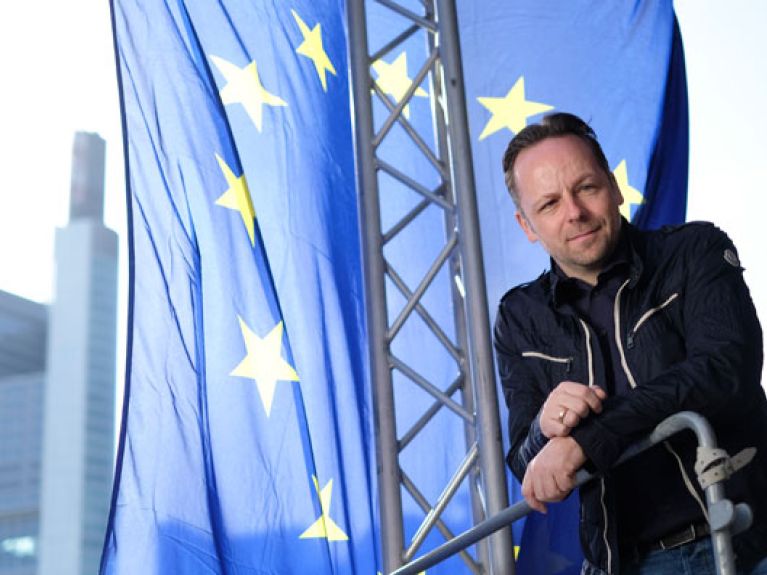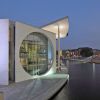“Go out onto the streets for Europe”
The success achieved by the pro-European demonstrations has surprised even the organisers at “Pulse of Europe”. Founder Daniel Röder explains why it is worth getting behind Europe.

“My wife and I started the 'Pulse of Europe' movement. Two events prompted it: the Brexit and Trump's election as US President. We said to ourselves: now we have to go out onto the streets. We have to be visible. In Europe we have to prevent the next step in this direction at all costs!
It was just intuitive. We work as lawyers, had never taken part in any demonstrations, had never been members of a party; I didn't even know which one I should join. So at the end of November 2016 we just sent an email to all the people we knew inviting them to gather in the Europaviertel area in Frankfurt am Main. The day was badly chosen: it was the first Advent Sunday. Even the time wasn't good: 4pm when it was already dark. And it was still drizzling. Despite all this 200 people came. This encouraged us. So we formed an organizing team and have been going out onto the streets since 15 January 2017. We never thought that the movement would get so big so quickly.
Giving the silent majority a face
Our idea is to give the silent majority a face. We are convinced that most German people want a united Europe, a democratic Europe, a Europe governed by the rule of law, a caring and tolerant Europe. This is definitely something we have to strive for. It can no longer be taken for granted. For us it's important that we go out onto the streets for something, not against something. This positive energy stirs something in people. I have seen a lot of people at our demonstrations with tears in their eyes. A lot of people have said to me: this feeling of community means so much to me. Being visible, being heard, it all says: we're still here too.
With 'Pulse of Europe' we want to do something simple, something where you can see the impact straight away. We have two goals. One: show people that they're not alone. Second: show politicians how important Europe is to us. We've been doing this for two months now. During this time 'Pulse of Europe' offshoots have been started in more than 60 cities and they're not stopping there! Not just in Germany but also in several cities in France, including Paris; then in Amsterdam, in Brussels, even in Bath in the UK. Altogether there were 30,000 people last Sunday on the streets for 'Pulse of Europe'.
European issues and human chains
In most cities the demonstrations proceed in much the same way. In Frankfurt it's fairly typical for some people from our team to say a few words at the beginning on the current issues affecting Europe. Then, we go around with the microphone and people can say what's on their minds. Sometimes we march to a certain place. Once, for example, we were in front of the Paulskirche church, a very symbolic place for German democracy. It was here in 1848 that the first freely-elected parliament met. Another time under the motto “Ode to Joy” we marched to the Beethoven memorial passing the statue of Schiller on the way. At the end we always make a human chain.
Where do go from here? At the beginning we only wanted to demonstrate once a week up until the elections in Holland. Now we're going to keep going until 7 May 2017 and the French elections. And after that we'll have to see. We won't be able to meet up once a week year after year. One thing is clear though: 'Pulse of Europe' will keep going.
Transcript: Friederike Haupt

